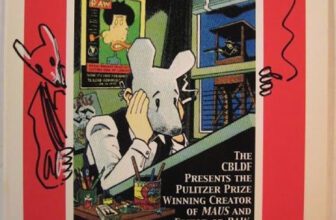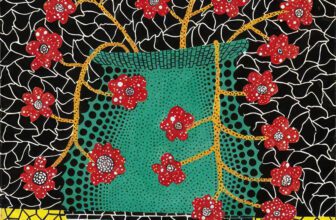
Sweeping It Under the Carpet
The striking and thought-provoking artwork Sweeping It Under the Carpet is the creation of the world-renowned yet enigmatic street artist Banksy. Known for his politically charged and satirical graffiti, Banksy has consistently used his art to challenge societal norms and expose uncomfortable truths. While much of his work appears spontaneously in urban spaces, Sweeping It Under the Carpet stands out as one of his most iconic and provocative pieces.
Banksy, an anonymous artist believed to have originated from Bristol, England, has maintained his secrecy despite global fame. His works appear suddenly, often in politically sensitive or socially significant locations, making them both a statement and an event. Sweeping It Under the Carpet, created in 2006, is no exception, this artwork gained immediate attention for its bold critique of institutional hypocrisy and environmental neglect.
What Is the Meaning of Sweep It Under the Carpet by Banksy?
The phrase “sweeping it under the carpet” is a widely recognized idiom that refers to the act of concealing or ignoring problems instead of addressing them. In Banksy’s artwork, this phrase is visualized through a stenciled image of a maid lifting a section of wallpaper or a large rug and brushing dirt underneath it. The powerful imagery forces the viewer to confront the deeper implications of avoidance and institutional cover-ups.
Banksy’s Sweeping It Under the Carpet is a commentary on how society, particularly governments and institutions, often choose to hide problems rather than solve them. The maid, a recurring figure in Banksy’s art, symbolizes service workers, often underappreciated yet essential figures in society. In this piece, the maid represents the act of suppressing inconvenient truths, a critique that can apply to various political, environmental, and social issues.
One of the most direct interpretations of this work is its critique of Western nations’ failure to address systemic racism, economic disparities, and environmental degradation. Instead of implementing real change, many issues are “swept away,” hidden from the public eye. The painting is a visual metaphor for society’s tendency to obscure uncomfortable realities rather than dealing with them transparently and ethically.
Why Did Banksy Make Sweeping It Under the Carpet?
Banksy’s art is rooted in social activism, and Sweeping It Under the Carpet is no different. There are several reasons why Banksy created this piece, each tied to his overarching artistic and political messages.
- Criticism of Governmental and Corporate Evasion
One of the major themes in Banksy’s work is government corruption and corporate deception. This piece highlights the way authorities often cover up major issues rather than addressing them. Whether it be war crimes, economic inequality, or environmental crises, the powerful often suppress truth for their own benefit. - A Call for Environmental Awareness
Another significant interpretation of this painting is its relevance to environmental issues. Governments and corporations frequently downplay the impact of pollution, climate change, and deforestation. Instead of confronting the problem, they use propaganda, misinformation, and short-term solutions to hide the real damage being done to the planet. The maid in the artwork could be seen as a symbol of industrialized nations attempting to conceal their environmental negligence rather than taking meaningful action. - Class and Labor Issues
Banksy often highlights class struggles in his work, and Sweeping It Under the Carpet is no exception. The maid, representing a working-class individual, is not sweeping under the carpet of her own volition; rather, she is likely following orders. This suggests that systemic injustices are often maintained by those in power while workers are left to clean up the mess, both literally and metaphorically. - Exposing the Artifice of Society
The way the maid lifts a section of the wall covering reveals a deeper, unsettling reality behind the surface. This aligns with Banksy’s broader artistic vision, he often seeks to expose the artificial constructs that shape modern society. Whether through political propaganda, media influence, or consumer culture, society often presents a polished exterior while masking deeper, more troubling issues.
What Art Movement Does Banksy’s Sweeping It Under the Carpet Belong To?
Banksy is most closely associated with street art and graffiti art, though his work also overlaps with movements such as Postmodernism, Dadaism, and Social Realism.
- Street Art and Graffiti Art
Banksy’s work epitomizes the street art movement, which emerged as a form of urban expression, rebellion, and social commentary. Unlike traditional fine art, street art is inherently political and often subversive, existing outside the institutional framework of galleries and museums. Sweeping It Under the Carpet is a prime example of how graffiti can be used as a tool for protest and awareness. - Postmodernism
Postmodern art often challenges traditional artistic values and emphasizes irony, satire, and critique. Banksy’s work is deeply postmodern in that it deconstructs societal norms and exposes contradictions in government policies, corporate practices, and media narratives. By using humor and accessible imagery, he engages a broad audience while delivering sharp political messages. - Dadaism
The Dada movement, which emerged in response to World War I, was known for its anti-establishment attitude and use of absurdity to critique society. Banksy’s art shares similar roots in its rejection of traditional artistic norms and its use of irony to challenge authority. - Social Realism
Social Realism is an art movement that aims to depict real-life struggles, particularly those of the working class and marginalized communities. Sweeping It Under the Carpet can be interpreted as a social realist piece because it highlights the hidden labor of workers and the ways in which systemic issues are ignored.
The Lasting Impact of Sweeping It Under the Carpet
Banksy’s Sweeping It Under the Carpet remains one of his most powerful and relevant works. Through a simple yet striking image, he encapsulates a universal truth about human nature and governance: it is often easier to ignore problems than to address them.
However, Banksy’s work serves as a challenge, by exposing these hidden issues, he forces the public to confront uncomfortable realities. Whether interpreted as a critique of political corruption, environmental destruction, class struggles, or media deception, the piece resonates deeply in an era where information is controlled and narratives are manipulated.
As Banksy continues to shape the landscape of contemporary art, Sweeping It Under the Carpet stands as a testament to his genius—an urgent reminder that truth cannot remain hidden forever. image/banksy/arthipo




